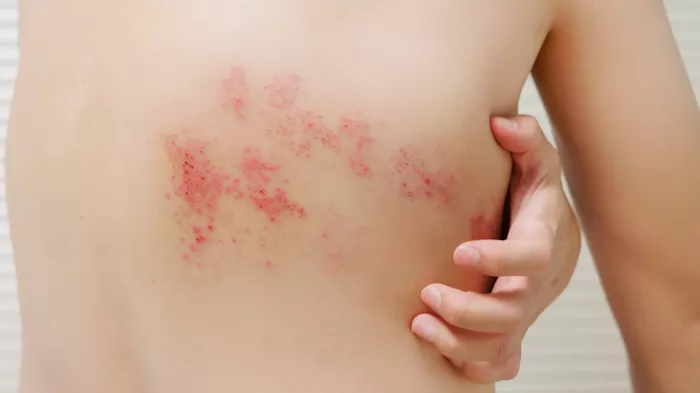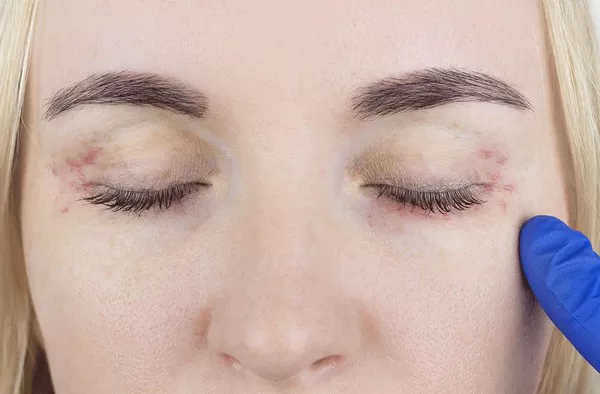Shingles is a painful rash that occurs due to the reactivation of the varicella-zoster virus (VZV), the same virus that causes chickenpox. Many people are familiar with chickenpox, but they might not know that the virus remains dormant in the body even after the infection clears up. In this article, we will explore where the shingles virus comes from, how it stays dormant in the body, and why it can reactivate later in life.
What is the Shingles Virus?
Shingles, also known as herpes zoster, is a viral infection caused by the varicella-zoster virus. This virus is a member of the herpesvirus family, which includes the viruses that cause cold sores, chickenpox, and genital herpes. After a person recovers from chickenpox, the virus doesn’t completely leave the body. Instead, it hides in the nerve tissues and can remain inactive for years. When the immune system weakens, the virus can reactivate, causing shingles.
The Origin of the Shingles Virus: Varicella-Zoster Virus
The varicella-zoster virus (VZV) is the root cause of both chickenpox and shingles. VZV belongs to the herpesvirus family, a group of viruses that can lay dormant in the body for long periods.
When a person is first infected with VZV, they develop chickenpox, which is characterized by an itchy, blister-like rash, fever, and fatigue. Chickenpox is most common in children but can affect people of any age. After the chickenpox infection resolves, the virus doesn’t leave the body entirely. It travels along nerve pathways to a group of nerve cells known as ganglia, where it can remain dormant for years.
How Does the Shingles Virus Lie Dormant in the Body?
After a person has chickenpox, the VZV retreats into the dorsal root ganglia. These are clusters of nerve cells near the spinal cord that control sensation in the skin. The virus can stay dormant here, sometimes for decades, without causing any symptoms. The body’s immune system keeps the virus under control and prevents it from becoming active. However, if the immune system becomes weakened, the virus can reactivate.
The immune system naturally weakens with age, which is why shingles is more common in older adults. Other factors that can weaken the immune system include:
Stress: High levels of stress can impair immune function, triggering the virus to reactivate.
Illnesses: Conditions like cancer, HIV, or autoimmune diseases can make the immune system less effective at keeping the virus in check.
Medications: Some medications, such as steroids or drugs used in organ transplants, suppress the immune system and can allow the virus to reactivate.
Trauma or injury: Physical stress to the body can also trigger the reactivation of VZV.
Reactivation of the Shingles Virus
When the immune system is weakened, the varicella-zoster virus can be reactivated. The reactivation of the virus leads to the development of shingles, which typically causes a painful rash. The virus travels along the nerves from the dorsal root ganglia to the skin, where it causes the distinctive shingles rash.
The shingles rash usually appears as a band or strip of blisters on one side of the body. It is often very painful, and the pain can persist even after the rash has healed. This lingering pain is known as postherpetic neuralgia (PHN), and it is a common complication of shingles, particularly in older adults.
Where Does the Shingles Virus Come From in the First Place?
The initial source of the varicella-zoster virus is chickenpox. Anyone who has had chickenpox can develop shingles later in life. This means that the virus originates from a prior infection with chickenpox. When someone catches chickenpox, they are exposed to the varicella-zoster virus, which enters their body and causes the chickenpox illness.
Once a person has recovered from chickenpox, they carry the varicella-zoster virus in their body. As mentioned earlier, the virus remains dormant in the nerve cells, waiting for the right conditions to reactivate. The virus does not come from an external source later in life; rather, it comes from the person’s own body, where it has been hiding.
Can You Get Shingles from Someone Else?
Shingles itself is not contagious, but the virus can be spread to someone who has never had chickenpox. If a person with shingles comes into direct contact with someone who has never had chickenpox or has not been vaccinated for chickenpox, the uninfected person could catch chickenpox, not shingles.
The virus is spread through the fluid in the shingles blisters. However, it is only contagious to someone who has not had chickenpox and has never been vaccinated for it. Once the rash has crusted over, the person is no longer contagious.
Risk Factors for Developing Shingles
Certain factors increase the likelihood of developing shingles. While anyone who has had chickenpox can develop shingles, the following factors can make a person more vulnerable:
Age: People over the age of 50 are more likely to develop shingles. This is because the immune system weakens with age, making it easier for the virus to reactivate.
Weakened Immune System: People with weakened immune systems, such as those undergoing chemotherapy or taking immunosuppressive medications, are more at risk. Conditions like HIV/AIDS can also make the immune system less capable of controlling the virus.
Previous Chickenpox Infection: People who have had chickenpox as children are at risk of developing shingles later in life. The virus remains dormant in their body for years before reactivating.
Stress: Emotional or physical stress can weaken the immune system, increasing the chances of shingles.
Other Health Conditions: People with diabetes, cancer, or other chronic illnesses may have a higher risk of shingles.
Shingles and the Immune System
The immune system plays a crucial role in keeping the varicella-zoster virus dormant. When the immune system is strong, it prevents the virus from reactivating. However, as people age or experience other conditions that weaken their immune system, the body becomes less effective at controlling the virus, allowing it to reactivate and cause shingles.
The immune response to VZV is also influenced by the presence of antibodies. Antibodies are proteins produced by the immune system to fight infections. People who have had chickenpox or who have been vaccinated against chickenpox have antibodies to the varicella-zoster virus. However, as these antibodies decrease over time, the risk of shingles increases.
Prevention and Vaccination
The good news is that shingles can often be prevented or its severity reduced through vaccination. There are two vaccines available for shingles prevention:
Zostavax: This is a live vaccine that was commonly used to prevent shingles. It is no longer the primary vaccine used but can still be administered in some cases.
Shingrix: This is the more widely used vaccine today. It is a recombinant vaccine and is highly effective at preventing shingles. It is recommended for people over 50, even if they have had shingles in the past.
The Shingrix vaccine is about 90% effective in preventing shingles and can reduce the severity and duration of the illness if it does occur. It is given in two doses, usually a few months apart.
Conclusion
In summary, the shingles virus, or varicella-zoster virus, comes from a prior chickenpox infection. After someone recovers from chickenpox, the virus remains dormant in the body, specifically in the nerve cells near the spinal cord. The virus can reactivate later in life, often due to a weakened immune system, and cause shingles.
Shingles is more common in older adults and those with weakened immune systems, though anyone who has had chickenpox can develop it. Vaccination, such as the Shingrix vaccine, can help prevent shingles and reduce its severity. It’s important to take steps to protect the immune system, manage stress, and consider vaccination to reduce the risk of developing shingles later in life.
Related topics


























